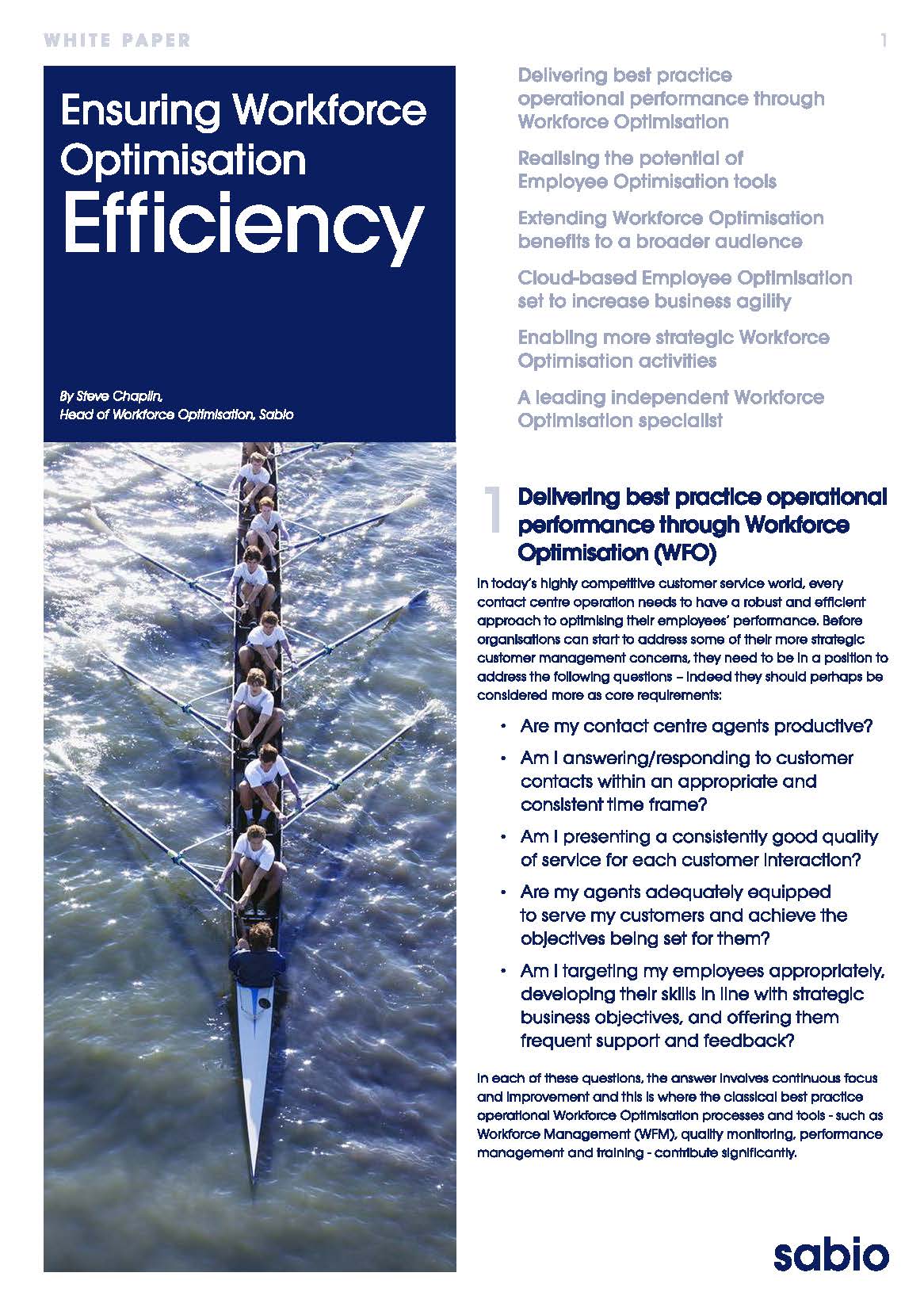Ensuring Workforce Optimisation Efficiency
08/19/2021 14:21

Workforce Management (WFM) is quite rightly seen as potentially the most valuable tool in the contact centre manager's portfolio, as it effectively provides them with a platform for unlocking the potential of further Workforce Optimisation initiatives.
Implemented and operated correctly, WFO disciplines such as Workforce Management also play an important ongoing role in ensuring that contact centres schedule and manage their most expensive resource – their agents – efficiently.
-
Delivering best practice operational performance through Workforce Optimisation (WFO)
In today’s highly competitive customer service world, every contact centre operation needs to have a robust and efficient approach to optimising their employees’ performance. Before organisations can start to address some of their more strategic customer management concerns, they need to be in a position to address the following questions – indeed they should perhaps be considered more as core requirements:
- Are my contact centre agents productive?
- Am I answering/responding to customer contacts within an appropriate and consistent time frame?
- Am I presenting a consistently good quality of service for each customer interaction?
- Are my agents adequately equipped to serve my customers and achieve theobjectives being set for them?
- Am I targeting my employees appropriately, developing their skills in line with strategic business objectives, and offering them frequent support and feedback?
In each of these questions, the answer involves continuous focus and improvement and this is where the classical best practice operational Workforce Optimisation processes and tools - such as Workforce Management (WFM), quality monitoring, performance management and training - contribute significantly.
While benefits may well also be realised through improved customer management techniques, the business justification for Workforce Optimisation projects will still generally be focused around efficiency through improved business practices - essentially achieving more for the same or less staffing investment.
Deploying a WFM tool can help to reduce unproductive agent time through more accurate forecasting and optimised scheduling, and can help to cut back on lost time thanks to better tracking of real-time adherence. Using quality monitoring tools and coaching/training to focus on areas such as improved screen navigation will also help to enhance agent productivity, with optimised average call handling times and reduced call hold and wait times. Agent feedback tools such as desktop scorecards and more targeted training can additionally be used to help improve agent motivation, development and efficiency.
Want to read more?
- Delivering best practice operational performance through Workforce Optimisation
- Realising the potential of Employee Optimisation tools
- Extending Workforce Optimisation benefits to a broader audience
- Cloud-based Employee Optimisation set to increase business agility
- Enabling more strategic Workforce Optimisation activities
